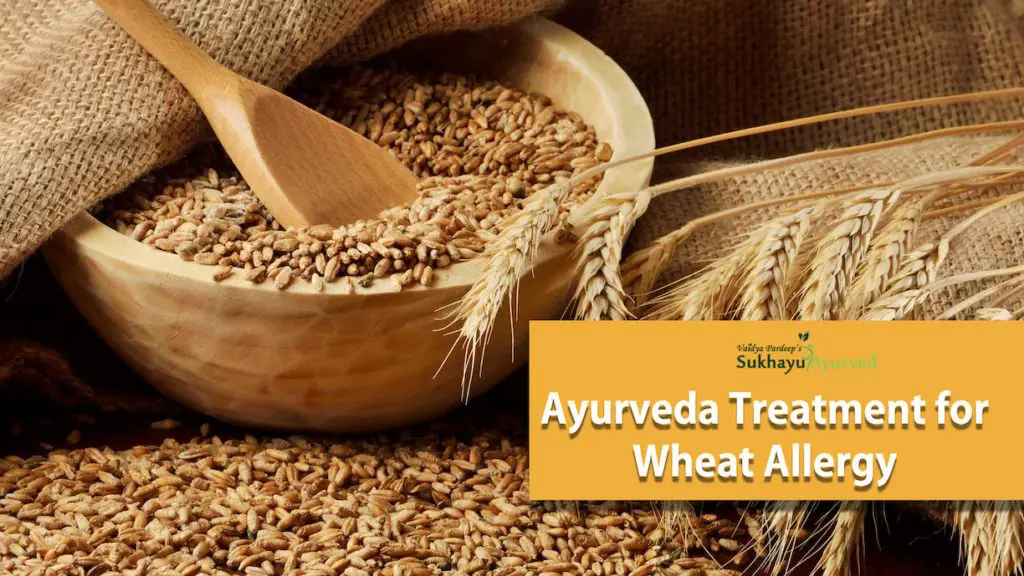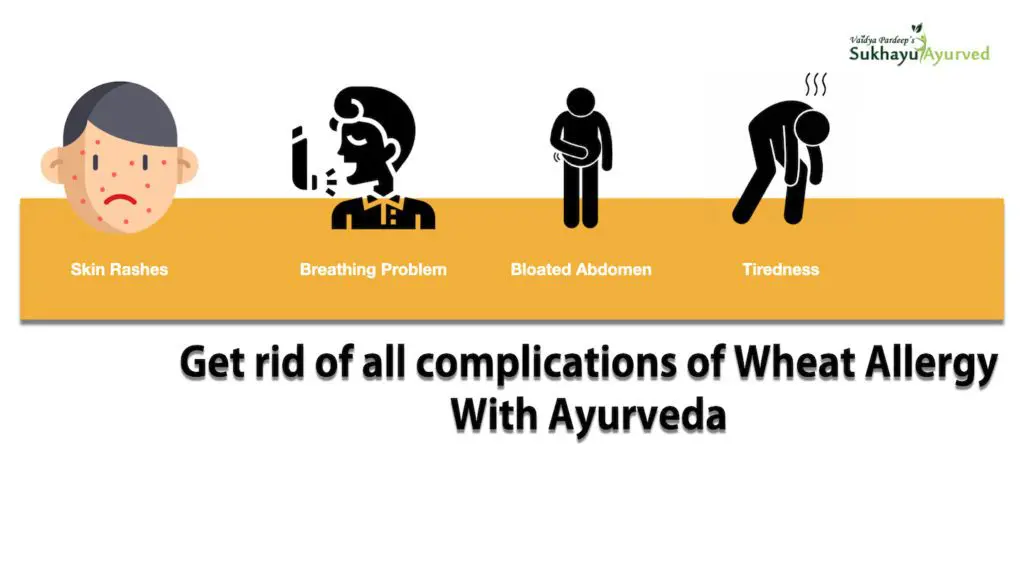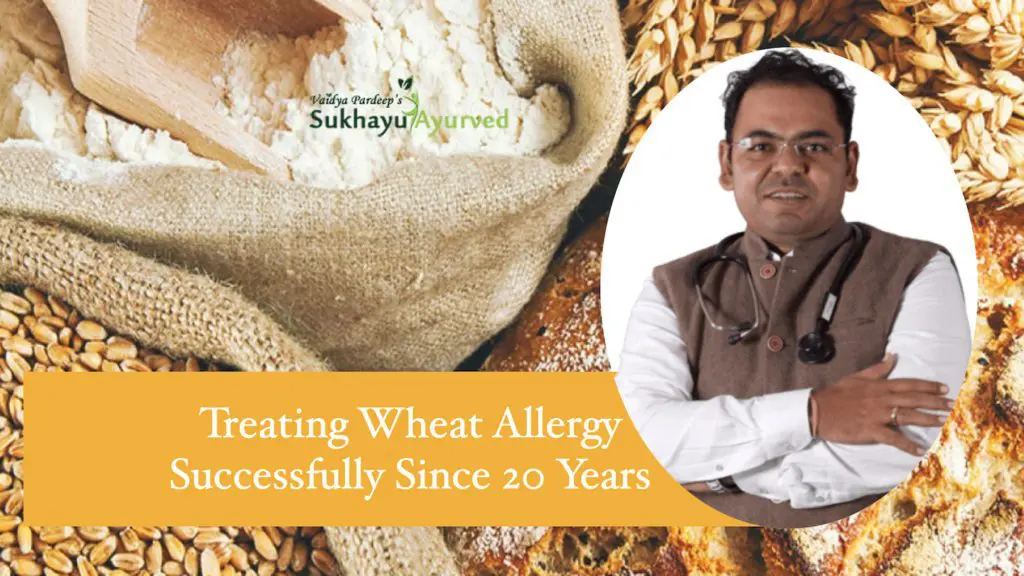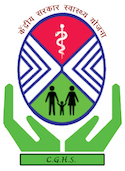Wheat allergy is a serious condition that can cause death if not treated. Luckily, there are many treatments available to those suffering from the allergy. Ayurveda is an ancient Indian medical system based on manipulating energy and bodily functions through natural substances such as plants, minerals, and animal products. One of its main goals is to maintain balance in your body by removing toxins from your diet so you can heal naturally from within. At Sukhayu we have treated thousands of patients for the Treatment of Wheat Allergy in Ayurveda. Here we will discuss all aspects of the treatment of wheat allergy in Ayurveda.
We need to look at the bigger picture to understand food allergies. The main thing is to heal the body and to avoid the reaction of the body towards wheat. First here I am discussing the most commonly asked question or you can say- what do you want to know exactly.

Does Wheat Allergy has some cure
What is curable in the conventional system of medicines??
Perhaps, nothing is the answer. Because cure is a state when you lead your life without any restriction. Means not even diet restrictions. You can eat everything, without any problems.
When we have a condition like- wheat allergy, where patients are young kids. It becomes our responsibility to help these kids to heal their bodies. Because a life, full of restrictions is not a life, what a kid can lead.
Being an Ayurved physician for the treatment of wheat allergy in Ayurveda, I set my priorities.
- You need to make sure the proper growth and health of the patient.
- To assist a person so that small amounts of wheat won’t lead a patient to any serious condition.
- A patient can lead a normal life.
These priorities are important to set for every patient too.
If you ask me- “Should a patient focusing on eating wheat with wheat allergy?”
My answer will be no a big no. The first target should be to bring back health and to establish the “ease” of a patient.
“Eating wheat is not cure of the wheat allergy”. The treatment of wheat allergy in Ayurveda focuses is very much simple.
Establish the individuality of an individual.
Why Food Allergies are Common?
Food connects us all to the universe. We all exchange “life” and “vitality” with the external world. There are certainly more things but the food is something that everybody takes with open hands.
Food and its energies mix well with our cells. Because food is “identical” to our system.
But all of a sudden, when the body develops some “negative perception” about certain food items. It leads to allergic reactions.
Food allergies are a common health problem in developed countries. According to an estimate- up to 8% of children have food allergies. Food allergy, particularly to peanuts and tree nuts, can be fatal. But in the case of wheat allergy, only a few cases show complications.
In the United States, there is one death every 3 hours due to food allergy reactions, most often from peanuts or tree nuts. There has been a fivefold increase in peanut allergy between 1997 and 2002 alone.
This means that 1 out of 50 kids will have a peanut allergy by the time they graduate high school.
How do Food Allergies Develop?
Human body stores memory in form of certain proteins. Because proteins have a particular sequence, a code and this code specifies the action of these proteins. The immunoglobulins are proteins. These are named as- IgG, IgM, IgE or IgA.
An allergic reaction occurs when the body’s immune system overreacts to an otherwise harmless substance, such as a food protein. The immune system normally produces antibodies called immunoglobulin E (IgE) in response to foreign substances like bacteria and viruses that it recognizes as “foreign.”
This “identity crisis” occurs due to bad memories. The memories store in the body in form of Immunoglobulins.
A normal antibody will bind with these foreign invader antigens and help eliminate them from the body.
In individuals with a food allergy, IgE antibodies start appearing to a specific protein found in a particular food.
When this protein appears in the presence of IgE antibodies. The immune system triggers certain cells to release histamine and other chemicals that cause an allergic reaction.
If you or your child and Immunology). For these reasons and others, it’s important for parents and caretakers to know how to identify the symptoms of an allergic reaction to food and what treatment options are available.
Why Wheat Allergy is Common Nowadays?
In infants and young children, wheat allergy is the third most common food allergy.
This is likely due to the fact that wheat is the first solid food in the diet of infants. Although it is not sure. The good news is that, unlike allergies to milk or egg, about 80% of children eventually lose their sensitivity to wheat over time and can tolerate eating whole-wheat products by age 5 or 6 without any problem.
Peanut Allergies, asthma, and eczema:
A recent study conducted at Johns Hopkins University School of Medicine showed a surprising link between peanut allergies and other conditions like eczema and asthma in kids. As part of this surveillance study, researchers surveyed parents about their children’s food allergies, asthma history, and other conditions. When they followed up with the families after 6 years, they found that kids who had peanut allergies were also more likely to have either eczema or asthma.
What are the Signs of an Allergic Reaction?

Symptoms of a mild reaction can include
- hives or welts;
- swelling at the site of exposure;
- itching in the mouth, throat, lips, eyes, ears, nose, tongue;
- coughing or wheezing;
- vomiting or other nausea symptoms.
- Swelling in the face or neck area by facial flushing,
- Difficulty swallowing,
- hoarseness,
- drooling,
- difficulty breathing- show the condition of wheat allergy.
If anyone experiencing these symptoms should immediately see your doctor for diagnosis and treatment of wheat allergy in Ayurveda.
What is Wheat Allergy?
Wheat allergy is an adverse immune system reaction to proteins found in wheat. Wheat allergy can be life-threatening. Therefore, it becomes a medical emergency.
This type of allergy is rare compared with other types of food allergies.
What Causes Wheat Allergy?
There are numerous proteins within wheat that can elicit an allergic response when consumed by humans. The most common allergen in wheat is glute. Which triggers the celiac disease and non-celiac gluten sensitivity. Gluten intolerance, including celiac disease, links with inflammation in the gut barrier lining, resulting in increased permeability or leaky gut syndrome.
What Are the Contents of Wheat?
Wheat has three main components – bran, germ, and endosperm.
The majority of wheat allergies attributes to the gluten proteins found in the endosperm portion of the wheat kernel.
Gliadin, which belongs to a family of prolamins known as class 2 gluten proteins, is another important allergen that may cause reactions in people who suffer from sensitivities or intolerances.
Gluten: Yes or No?
The key to managing your allergy successfully is understanding how much gluten you can tolerate and at what stage it will appear on an ingredients label.
Ingredients derived from wheat can be found in many products such as bread, cakes, and pastries; therefore, avoiding them wholly may be challenging. Alternatively, you could try to purchase gluten-free versions of your favorites.
Where else Gluten is Present?
Gluten is present in common grains such as Wheat, Barley, Rye, and Spelt. However, it can also appear in less obvious places for example sauces (soy sauce) salad dressings dried fruit smoked fish, and even medications.
How do I Know if I Have a Wheat Allergy?
Symptoms of wheat allergy are similar to other food allergies and include hives, itchy skin rash, tingling/itching sensation around the mouth, vomiting, diarrhea, stomach ache and may even cause anaphylaxis. Some people with wheat allergies have experienced respiratory distress leading to death after eating wheat. The best way to determine if you have a wheat allergy is by speaking with your healthcare provider.
What are the Symptoms of Wheat Allergy?
Symptoms of wheat allergy are similar to other food allergies and include hives, itchy skin rash, tingling/itching sensation around the mouth, vomiting, diarrhea, stomach ache and may even cause anaphylaxis. Some people with wheat allergies have experienced respiratory distress leading to death after eating wheat. The best way to determine if you have a wheat allergy is by speaking with your healthcare provider.
What Foods Contain Gluten?
Gluten can be found in any food that contains wheat (bread, pasta), barley, or rye as ingredients. Also, products made from these ingredients such as imitation meats, soy sauce, and salad dressings are also common sources of gluten.
How much does one have to consume? For most people, consuming wheat protein causes only minor symptoms of food allergy or intolerance that are limited to the skin or gastrointestinal tract. For some individuals with an extreme sensitivity to wheat, even minuscule amounts can cause severe allergic reactions.
What are the Side Effects of Wheat Allergy
Side effects of wheat allergy may include skin rash, gastrointestinal problems such as diarrhea and vomiting, respiratory problems, and in rare cases anaphylaxis.
What is Anaphylaxis Due to Wheat Allergy?
Anaphylaxis is a potentially life-threatening allergic reaction that can occur when the body comes into contact with an allergen. Symptoms of anaphylaxis include swelling of the throat, difficulty breathing, chest pain, and feeling lightheaded or faint. If you experience any of these symptoms, seek emergency medical attention immediately.
Wheat Allergy Treatment
Going Gluten-Free without proper medical guidance can lead to other health problems. If you think you may have a wheat allergy, it is important to seek medical advice from a healthcare professional who can help you identify the cause of your symptoms and create an appropriate treatment plan for treatment of wheat allergy in Ayurveda.
There is no one-size-fits-all approach to managing a wheat allergy, but some general tips include avoiding foods that contain wheat, barley or rye and reading food labels carefully to identify hidden sources of gluten.
There are also many gluten-free products available on the market today that work as substitutes for foods containing wheat.
Ayurveda about Wheat Allergy Treatment
Wheat is a common food allergen and can cause an increase in Pitta, especially for Vata body types. Symptoms of wheat allergy include irritation of the skin or mucous membranes, headache, fever, specifically from Kapha dosha which causes effects on the digestive system such as gas formation and bloating.
Wheat allergies associate with gluten intolerance resulting in diarrhea due to a lack of enzymes necessary to digest complex carbohydrate molecules called disaccharides.
Grains are considered “complete proteins” because they contain sufficient amounts of all amino acids essential to life which makes them more nutritious than meat, eggs, or dairy products which must be combined with each other to obtain a complete protein.
This may have something to do with why it’s difficult for Indian people to digest wheat.

Does Ayurveda Recommend to Just Avoid Wheat in Wheat Allergy
People with Wheat allergies should avoid Wheat. But Ayurveda doesn’t recommend completely avoiding any foods or food groups especially when you are trying to balance the doshas because it could create various other imbalances in the body.
It’s better to go for a Gluten-Free Diet for at least some time and then slowly include these foods back into your diet by rotating them frequently so that you don’t confuse your immune system.
Ayurveda & Wheat Allergy
If a person has a wheat allergy, he may also have allergies to other grains, such as oats and rye. It is possible for celiac disease sufferers to have an allergy to corn as well, but this seems less common. In Ayurveda gluten intolerance or the inability to digest gluten that occurs due to any reason is called “Amlakwadoshaja” which means an abnormal increase in Kapha dosha.
People who suffer from this type of Gluten Intolerance must completely avoid foods made from wheat flour. Some grains like barley and rye do not necessarily cause problems for everyone since many people can tolerate them well.
But there are others who may show problems with any of these grains. If you notice gluten intolerance symptoms such as indigestion, bloating, and gas after eating these grains you should avoid them.
Relation between Grahani and Wheat Allergy
In Ayurveda Gluten intolerance links to Grahani. This means the person will have Kapha dosha in excess, Vata dosha will be less than normal, and with suppressed Pitta Dosha.
Since the main cause of gluten intolerance is either due to deficiency of digestive enzymes or due to some unknown factors, Ayurvedic doctors recommend Gluten-Free Diets for at least 6 – 8 months to see if you experience any relief from your symptoms.
Treatment of Wheat Allergy in Ayurveda
Ayurveda works on the concept of Agni or Digestive Fire. So, the main focus is to improve digestion and to bring back the balance in the Agni.
There are various ways Ayurveda can help improve digestion such as Panchakarma which is a detoxification process, herbs, dietary changes, and yoga.
If you suffer from a wheat allergy, it is important to seek emergency medical attention. Wheat allergy is a serious condition and should not be taken lightly. Treatment of wheat allergy in Ayurveda can help you to get rid of the problem and you can opt for a healthy and normal life.
How to Balance Agni in Case of Wheat Allergy ?
In the case of Wheat Allergy, the focus is to improve digestion and bring back the balance in the Agni. There are various ways Ayurveda can help improve digestion such as Panchakarma which is a detoxification process, herbs, dietary changes, and yoga
If you suffer from a wheat allergy, it is important to seek emergency medical attention. Wheat allergy is a serious condition and should not be taken lightly.
Ayurveda recommends avoiding wheat if you have a wheat allergy but doesn’t recommend completely avoiding any foods or food groups. It’s better to go for a Gluten-Free Diet for at least some time and then slowly include these foods back into your diet by rotating them frequently so that you don’t confuse your immune system. If you still want to take wheat, make sure it is an organic whole grain without processing or enriched with synthetic vitamins and minerals. Unlike the refined flour which is common in many bakery products, cookies, cakes to bake bread, etc. This will reduce the chances of getting allergies from wheat allergen “Gluten”.













